Blondie were the darlings of punk. It just took us a while to realise
Chris Stein thought he’d gone back three decades when he and Debbie Harry brought their band to Australia.
By JP O'Malley
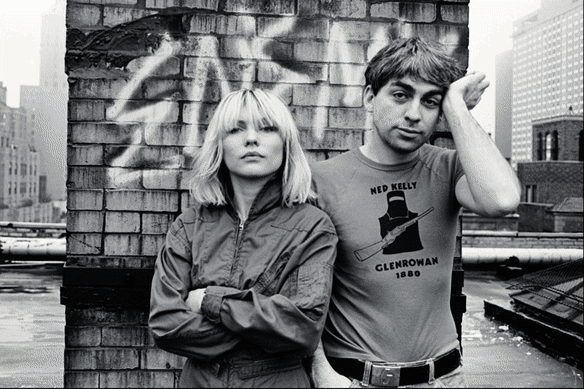
Credit: Chris Stein, Allan Tannenbaum, Getty Images, Angela Wylie
Chris Stein was 19 when he had a psychotic breakdown during the summer of 1969. He began hearing voices, having hallucinatory visions, and eventually wound up on a psych ward at the Beth Israel Hospital in downtown Manhattan.
“I had been taking a lot of LSD,” the 74-year-old musician best known as the co-founder of iconic ’70s band Blondie explains from his home in New York. A doctor told Stein he had schizophrenia. “I think I was misdiagnosed,” he says. “Because I never had any similar episodes after that.”
The incident is one of several encounters with illicit drugs detailed in Stein’s memoir, Under A Rock, which is published on June 6. Stein was born in 1950. He was raised in a Jewish family in Brooklyn and studied fine arts at the School of Visual Arts in Manhattan. While there, he developed an interest in photography and the memoir includes many of his images from Blondie’s early days in the mid-1970s.
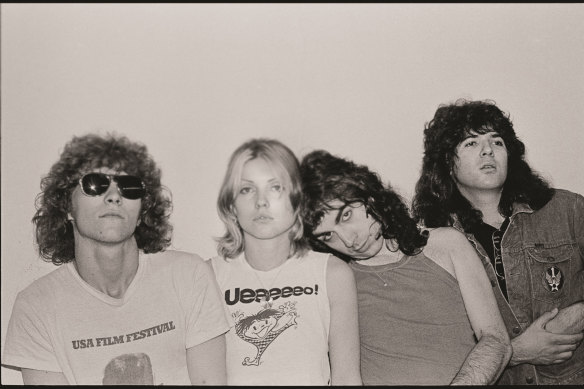
Blondie “selfie” from 1975. From left: Gary Valentine, Debbie Harry, Chris Stein and Clem Burke.Credit: Chris Stein
As a teenager, Stein played in a garage band that warmed up for the Velvet Underground, who were managed by Andy Warhol — then a leading figure in the Pop Art movement. “Andy was a sweet, charming guy who was a good listener, but by the time I got to hang out with him, he was enamoured with celebrities,” says Stein.
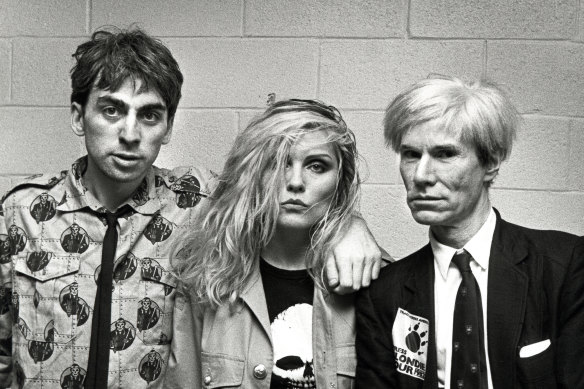
Chris Stein with Debbie Harry and Andy Warhol, who Stein says became “enamoured with celebrities”.Credit: Getty Images
From 1970 to ’73, Stein spent his days wandering Manhattan’s derelict urban environments, taking photographs. He occasionally jammed with his friend Tom Verlaine, who went on to form Television, another iconic New York band. Verlaine asked Stein to consider joining his group, but he declined, teaming up instead with Debbie Harry, who had formed an all-girl trio called The Stillettos.
Almost immediately, the pair became romantically involved. During their 12-year relationship, Stein developed a rare autoimmune disease, and the pair took time out from the band while Harry cared for him. They parted in 1985 but have continued to collaborate musically and in the book’s foreword she writes about the pair shooting for the moon artistically during their “very long music and love relationship”.
Their professional career began during the heyday of American punk and new wave. At the legendary CBGB nightclub, the careers of many New York groups were launched, including The Ramones, The New York Dolls, Talking Heads, The Patti Smith Group and Television. The Stillettos supported the latter band several times.
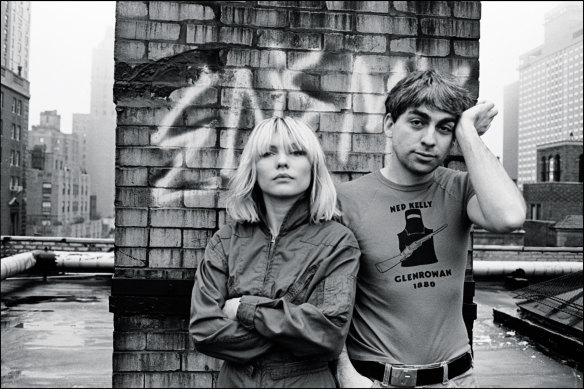
Debbie Harry and Chris Stein on the roof of his New York apartment. Stein wears a Ned Kelly T-shirt bought during Blondie’s first Australian tour in 1977.Credit: Allan Tannenbaum
After one of those shows, the pair were mugged at knifepoint, forced into Stein’s apartment and tied up. The attacker then raped Harry. “It’s still upsetting,” says Stein. “We never went to the police because we didn’t feel like they would be able to do anything.”
The Stillettos had a short life span, but Stein and Harry continued playing together, first under the name Angel and the Snake and then as Blondie. Later band members included drummer Clem Burke, keyboard player Jimmy Destri, and bassist Gary Lachman.
Their debut album, Blondie, had limited success globally but was a hit in Australia, where In the Flesh, the album’s second single, reached number two. During their first Australian tour in 1977, it became clear that the song might have created a false impression.
“It’s a very peaceful ballad, so there may have been some misconceptions when we showed up in Australia and started playing aggressive punk music,” says Stein. He recalls the Australian press, and even some fans, giving them a pretty hostile reception.
At their shows in Perth and Adelaide, “all the women were dressed in flower-print skirts that went down to their ankles. It kind of felt like it was the 1940s, not the 1970s”.
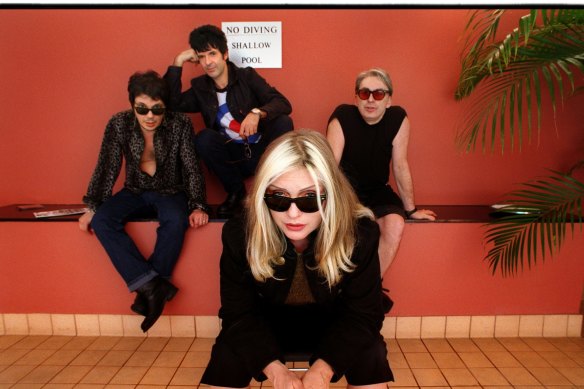
Blondie, from left, Jimmy Destri, Clem Burke, Debbie Harry and Chris Stein in Melbourne in 1999.Credit: Angela Wylie
He has fond memories of Melbourne, though, especially the city’s artists, including Vali Myers. “She was a big influence on me,” he says. Decades later, he met the then 60-year-old dancer in a room at the famed Chelsea Hotel, which Myers had painted herself. Stein describes Myers (who died in Melbourne in 2003) as an unselfconscious artist who spent her life striving for true, uninhibited artistic freedom.
Stein returns to this theme many times in his memoir. He was never comfortable with Blondie being pigeonholed into the new-wave scene, which he says was full of restrictive rules and parochial parameters.
The book also explores the chaos of becoming a global rock star, almost overnight, when the 1978 single Denis hit number one in several European countries and number two in Britain. The following year, the band’s disco-infused pop classic Heart of Glass became Blondie’s first number one US single. Subsequent hits, including Atomic, Call Me and The Tide is High cemented their global success.
Harry’s natural beauty and sex appeal had always been a focal point, but the band’s growing fame brought added pressure. The press and fans became obsessed with her and even fellow musicians — including David Bowie and Iggy Pop — tried to steal Stein’s girlfriend. “David and Iggy were always very professional, even in their hitting on Debbie,” Stein says now. “My relationship with Debbie was never stressful, but outside forces around us made for stress and our drug use created more stress.”
Stein’s drug of choice was heroin. After kicking that, he moved onto cocaine, which he continued using for decades. In one attempt to get clean, he fled New York and took refuge with Beat Generation author William Burroughs in his quiet suburban house in Kansas.“I feel lucky to have hung out with Bill,” says Stein. “We were both on methadone at the same time, we had a lot in common, including a shared love of knives, and he was just a really good guy.”
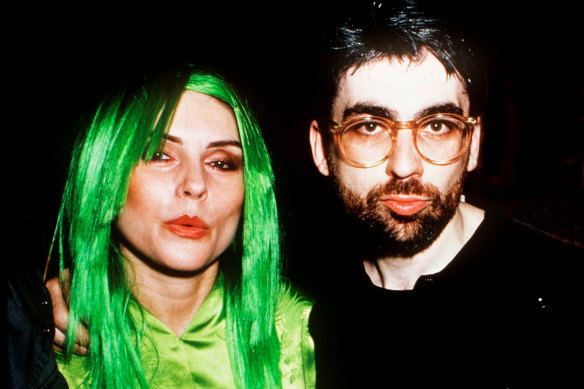
Debbie Harry and Chris Stein in 1981.Credit: Getty Images
When Blondie decided to split up in 1982, there was no grand announcement or tears shed. The band simply stop rehearsing and touring. When Harry and Stein ended their personal relationship in the mid-1980s, there was no real drama either. They had been functioning junkies for some time, which didn’t help. But the relationship “had simply run its course,” Stein says. When Blondie reformed in 1997, money was not the only motivation, but it was a factor. At the time, Stein was selling knives and artworks to feed his cocaine habit.
Stein’s self-destructive pattern changed when he met actor Barbara Sicuranza. They married in Las Vegas in 1999 and had two daughters, Vali and Akira. Tragically, Akira died last year, aged 19, from an accidental drug overdose. “I presented my own drug experiences in a negative light to our kids, but I’m wracked with guilt that any discussions might have been misconstrued,” Stein writes in his memoir. Today, he doesn’t have much more to add. “It’s been a year now,” says Stein, visibly hurting.
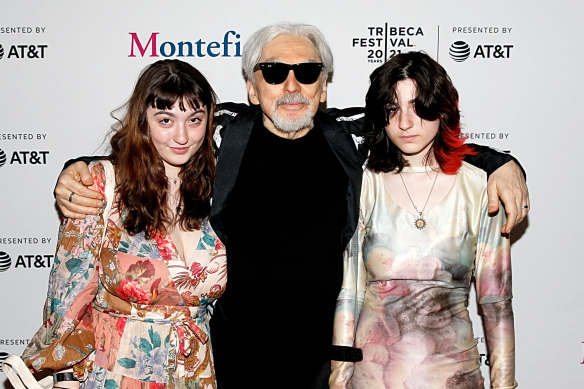
Chris Stein with his daughters Akira (left) and Valentina. Akira’s death in 2023 left Stein “wracked with guilt”.Credit: Getty Images
In March 2006, Blondie were inducted into the Rock & Roll Hall of Fame. They continue to tour globally, including in Australia for this year’s Pandemonium Rocks festival, but without Stein: “I’m a worn out after 50 years of it,” he says.
In 2014 Stein held a photography exhibition in Somerset House, London, titled Me, Blondie and The Advent of Punk, which subsequently became a book of photography. “There are maybe six of my photos that I think are really outstanding,” he says.” I’ve always [liked] using the full frame.” Still, he claims to be deeply suspicious of wallowing in cultural nostalgia and past glories.
Under A Rock concludes in the same place it begins: Russia in the early 20th century. It was there that Stein’s father, Ben, was born. He immigrated to the United States as a young child. Stein cites The Strange Life of Ivan Osokin as a book he often returns to when thinking about the circular nature of time and how it relates to identity, meaning and memory.
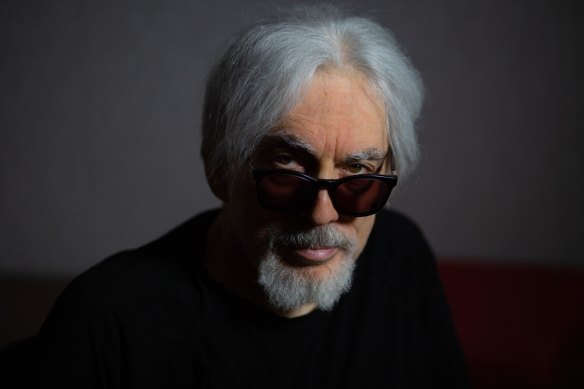
Chris Stein: ″I look back at my younger self and think, maybe I shouldn’t have taken myself so seriously.″
Published in Moscow in 1915, by Russian philosopher P. D. Ouspensky, the novel follows Ivan Osokin’s mission to correct his mistakes by reliving his past. When a magician sends Ivan back in time, he ends up doing everything exactly the same, failures and foibles included.
“I look back at my younger self and think, maybe I shouldn’t have taken myself so seriously,” says Stein. “I said a lot of stupid shit in the press and when I see the clips online of that I [cringe].”
Does writing one’s own life story bring any new insights and wisdom?
A long pause follows. A man of few words, Stein laughs. “What did I learn? I don’t f---ing know.”
Under A Rock is published by Hachette at $34.99.